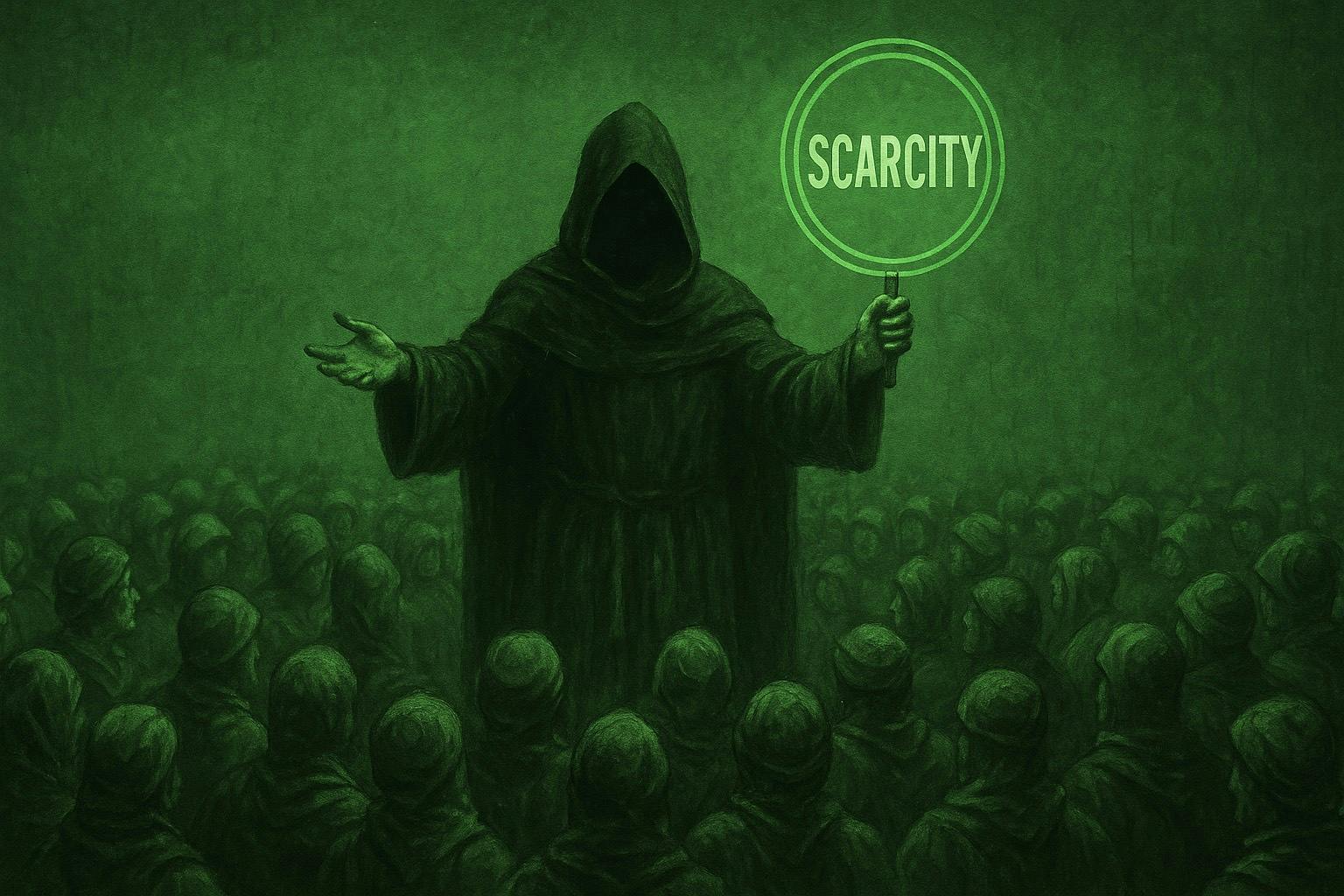What separates the victors from the forgotten in modern marketing is not creativity, nor clever slogans, nor even product innovation. It is scarcity; the ruthless manipulation of perceived availability that bends consumer psychology to your will. Scarcity is not new. It has stalked humanity since the earliest barter exchanges, when salt, grain, or steel were hoarded, rationed, and dangled before the desperate. But in today’s attention economy, scarcity has been weaponized with algorithmic precision, transforming markets into psychological battlefields where desire is engineered, not discovered.
The old masters of marketing, Al Ries and Jack Trout, taught the importance of positioning: to carve out mental territory in the consumer’s mind and defend it with consistency. But positioning has mutated. It is no longer about where a brand sits, but how long it will sit there before disappearing. Modern marketers understand that consumers scroll endlessly, blind to abundance but hyper-attuned to what they cannot have. Scarcity, then, becomes the sword that slices through noise, seizing attention not through persuasion, but through urgency.
The Psychology of Scarcity
Scarcity alters perception at its core. It hijacks attention, magnifies value, and short-circuits rational decision-making. Studies across behavioral economics and psychology confirm the same brutal law: when access is limited, desire escalates. When choices are restricted, focus sharpens. And when time is short, hesitation dies.
In my paper The Psychology of Scarcity in Modern Marketing (DOI: https://doi.org/10.6084/m9.figshare.30172726.v1). I argue that scarcity today functions less as a byproduct of supply and more as a manufactured tool of dominance. Algorithms are coded to ration exposure. E-commerce platforms deploy artificial countdowns. Social feeds surface vanishing opportunities. Scarcity is engineered not to reflect reality, but to dictate behavior.
This manipulation thrives because human cognition has not evolved to resist it. Scarcity triggers primal survival instincts, the same instincts that once forced tribes to fight over dwindling food stores or defend watering holes. In the digital realm, those instincts are redirected toward “limited seats left” on webinar, “only 3 remaining” in an online cart, or “offer expires in 24 hours” plastered across an ad. It is warfare dressed as convenience.
Why Scarcity Endures When Abundance Fails
Abundance creates blindness. When everything is available, nothing stands out. The modern marketplace is defined by overproduction; millions of products, endless services, infinite “content.” And yet, in this deluge, consumers feel starved. Starved not for options, but for meaning.
Scarcity provides the illusion of meaning. It reframes a commodity as a conquest, transforming a passive consumer into an active participant in a chase. Consider:
- Sneaker drops that vanish in minutes, creating secondary markets where prices soar beyond reason.
- Subscription models that gate content, creating prestige through exclusion rather than substance.
- Social media algorithms that withhold reach, making virality feel like lightning instead of electricity.
Abundance dulls the blade. Scarcity sharpens it. This is why scarcity is not just a tactic; it is the foundation of dominance in the algorithmic age.
Scarcity as Psychological Warfare
In The 23 Laws of Marketing: Master Them or Die, I framed marketing as a form of psychological warfare. Scarcity is one of its most lethal weapons. Unlike persuasion, which relies on logic or emotion, scarcity operates beneath awareness. It bypasses reason and triggers compulsion. It is the whispered voice that says, “If you do not act now, you will lose forever.”
This framing forces a shift in how we see campaigns. The successful strategist does not merely “offer” products; he orchestrates conflict. He designs scenarios where consumers compete against each other for access, pitting one individual’s fear of missing out against another’s urgency to act. In this arena, the brand becomes less of a vendor and more of a battlefield architect.
Scarcity also fractures loyalty. Traditionalists believed in nurturing customers for the long term. But scarcity thrives on disposability. When campaigns are engineered to vanish, customers do not stay for comfort. They return for the chase. Scarcity addicts the consumer not to the product, but to the hunt itself.
Digital Scarcity and the Algorithmic Age
In previous centuries, scarcity was often real; caused by limited supply, physical constraints, or geography. But the digital age has introduced artificial scarcity, a simulation of lack where none exists. This is where marketing evolves from persuasion into manipulation.
- Limited-time offers exist even when supply is endless.
- Invite-only communities thrive even though the gates could easily be opened.
- NFTs and digital collectibles sell for fortunes, not because of inherent utility, but because scarcity is coded into the blockchain itself.
This is psychological warfare at scale. Algorithms enforce rationing. Attention is meted out like water in a desert, ensuring that demand always exceeds supply. The marketer who grasps this truth does not sell; he governs.
The Dark Age of Scarcity
Scarcity’s power cannot be denied, but neither can its danger. It creates intensity, but it also breeds volatility. Push too hard, and scarcity collapses into cynicism. Consumers may obey in the short term, but once they recognize the manipulation, resentment festers. The strategist must balance ruthlessness with subtlety.
There are three principles for deploying scarcity without self-destruction:
- Calibrate Perception – Scarcity must feel authentic, even when manufactured. If the consumer detects the artifice, the spell breaks.
- Control the Tempo – Constant scarcity desensitized. Deploy it sparingly, like a sniper’s shot, not a machine gun’s spray.
- Escalate Stakes – Scarcity should not just limit product access but redefine status. When scarcity confers identity, consumers fight harder to possess it.
The Machiavellian strategist knows that scarcity is not a tool for everyone. It requires discipline, precision, and the will to manipulate without remorse. Used correctly, it transforms markets into arenas of conquest.
Conclusion: Scarcity as the Law of the Ruthless
The psychology of scarcity reveals a timeless law: people desire most of what they are denied. In the modern economy, where abundance overwhelms and attention is fragmented, scarcity is not a tactic. It is survival. Marketers who fail to weaponize it are drowned in noise. Those who master it rise above the crowd, commanding loyalty not through persuasion, but through compulsion.
Scarcity is not moral. It is not fair. It is not kind. Some may consider it unethical. But it works. At the end of the day, you decide whether the ends justify the means. It is the ruthless strategist, not the righteous one, who endures.










